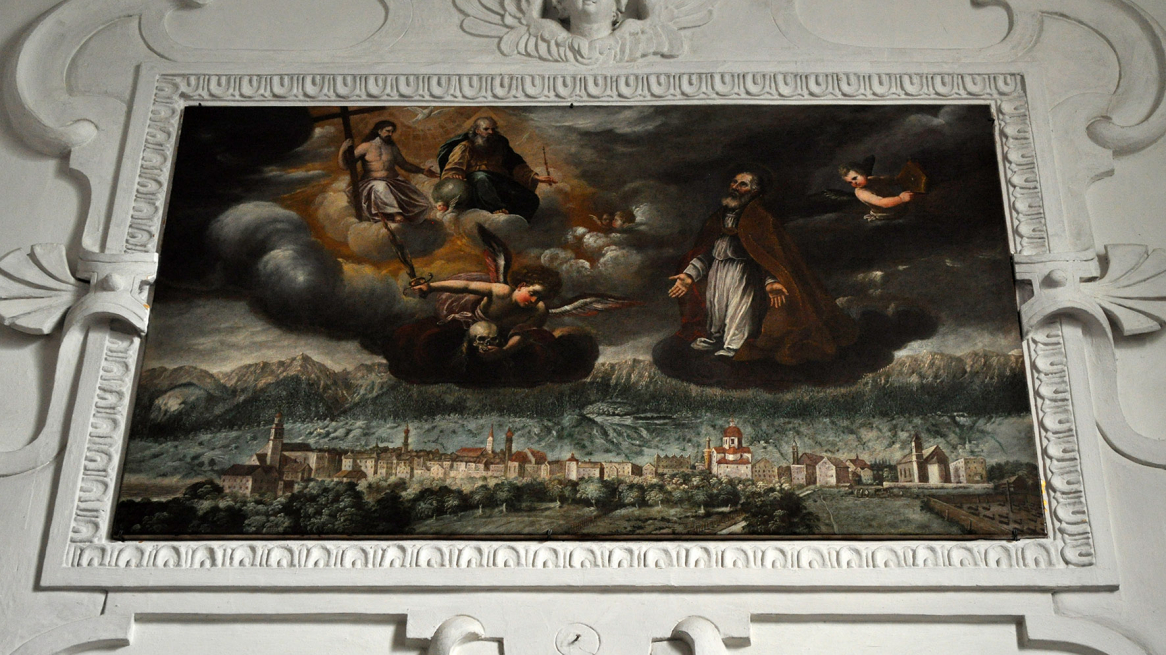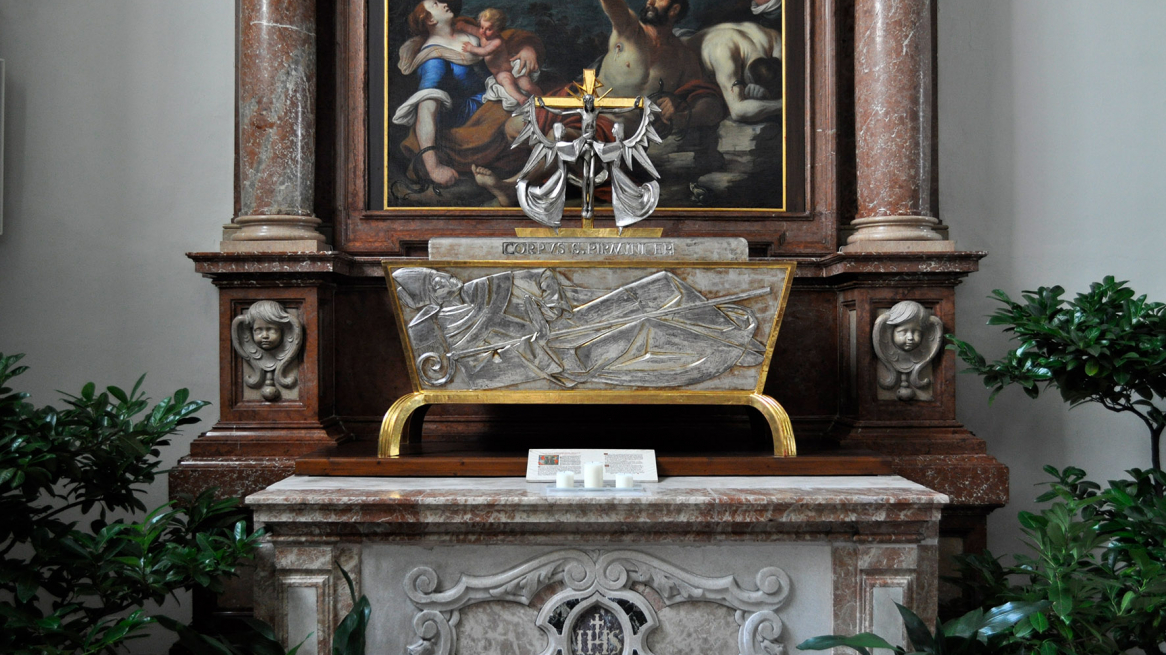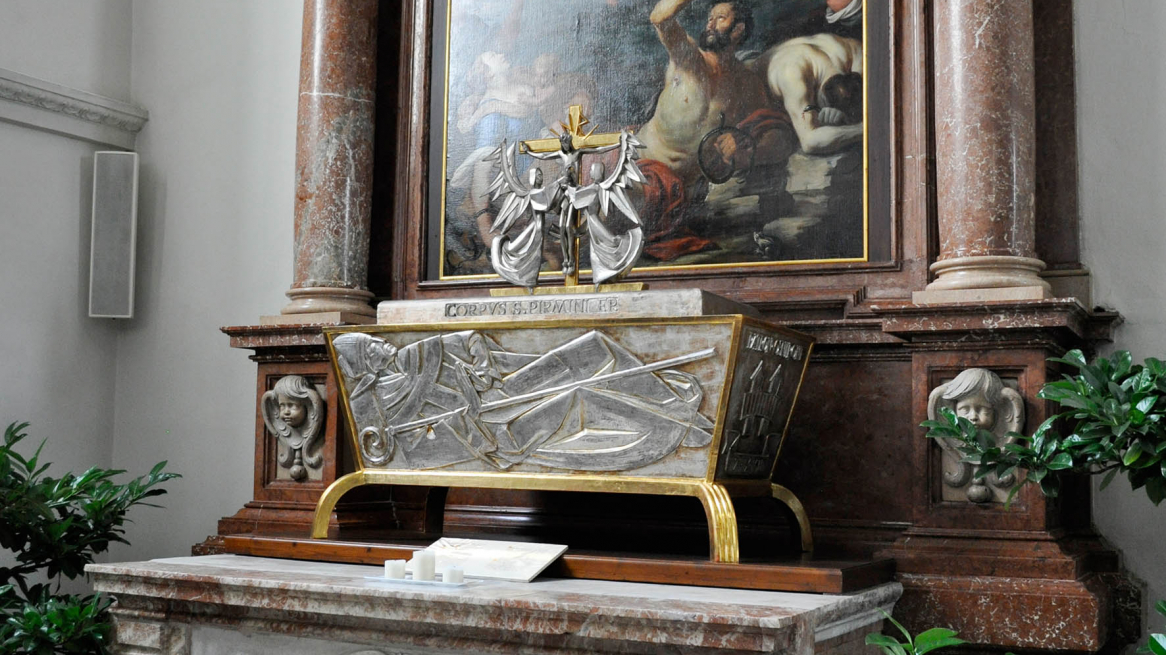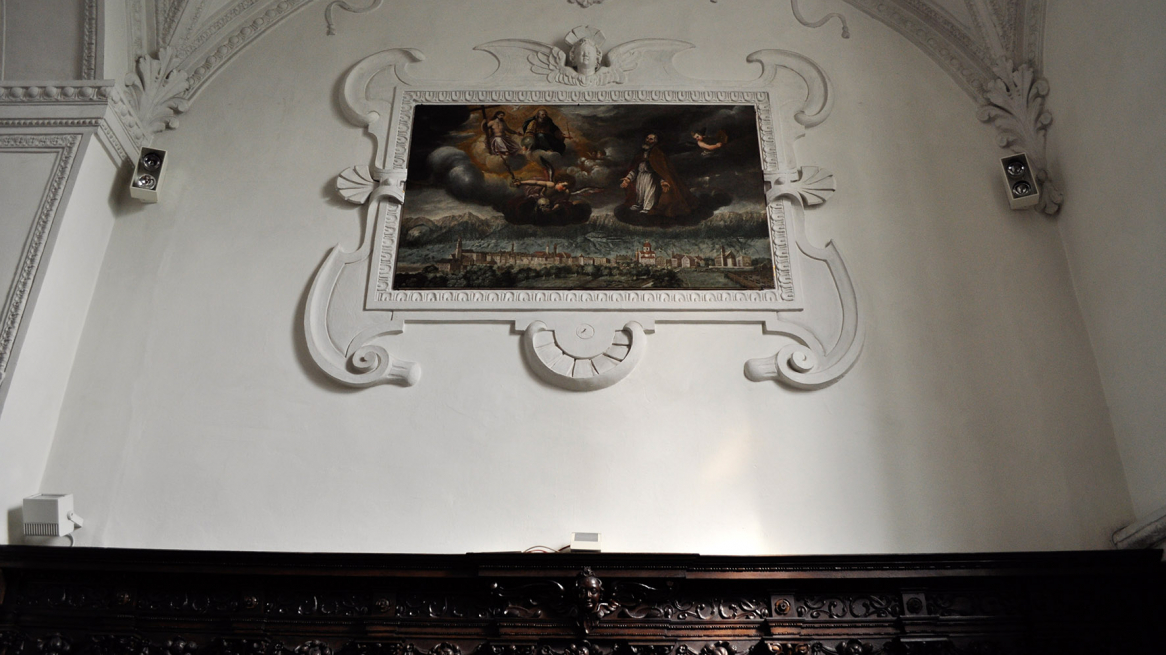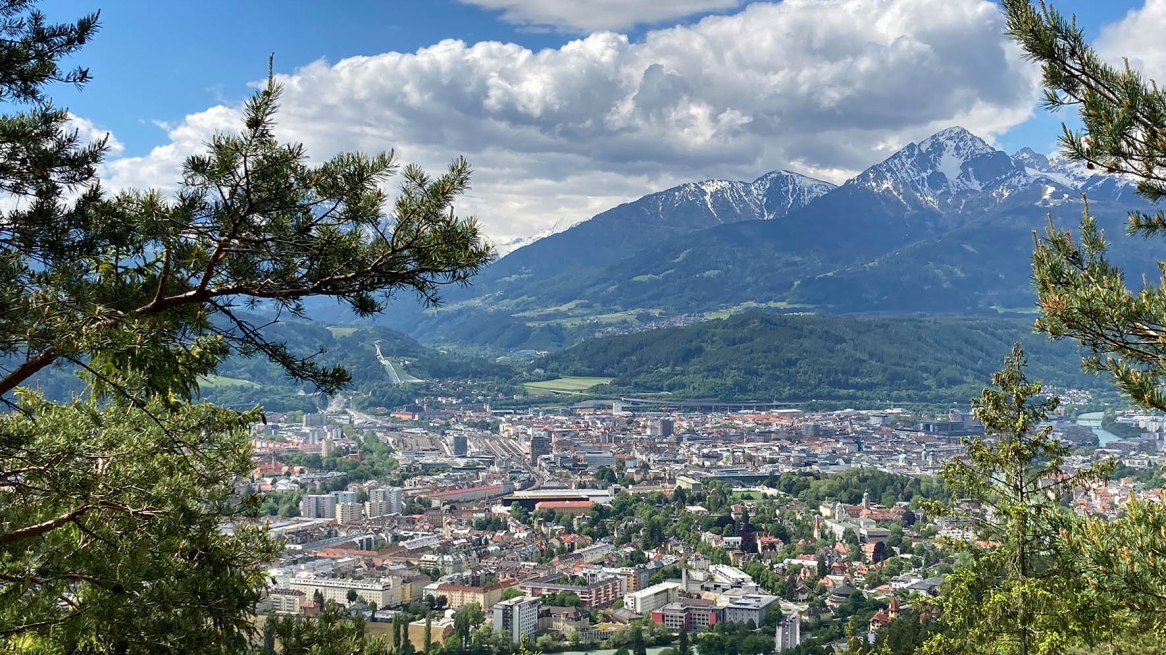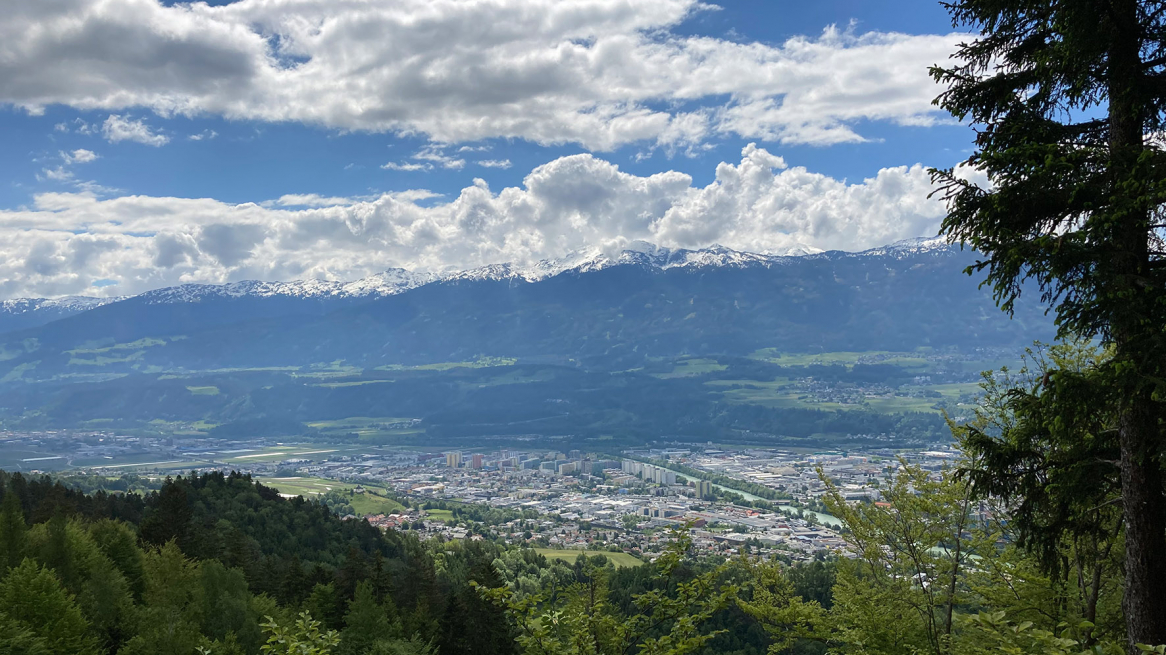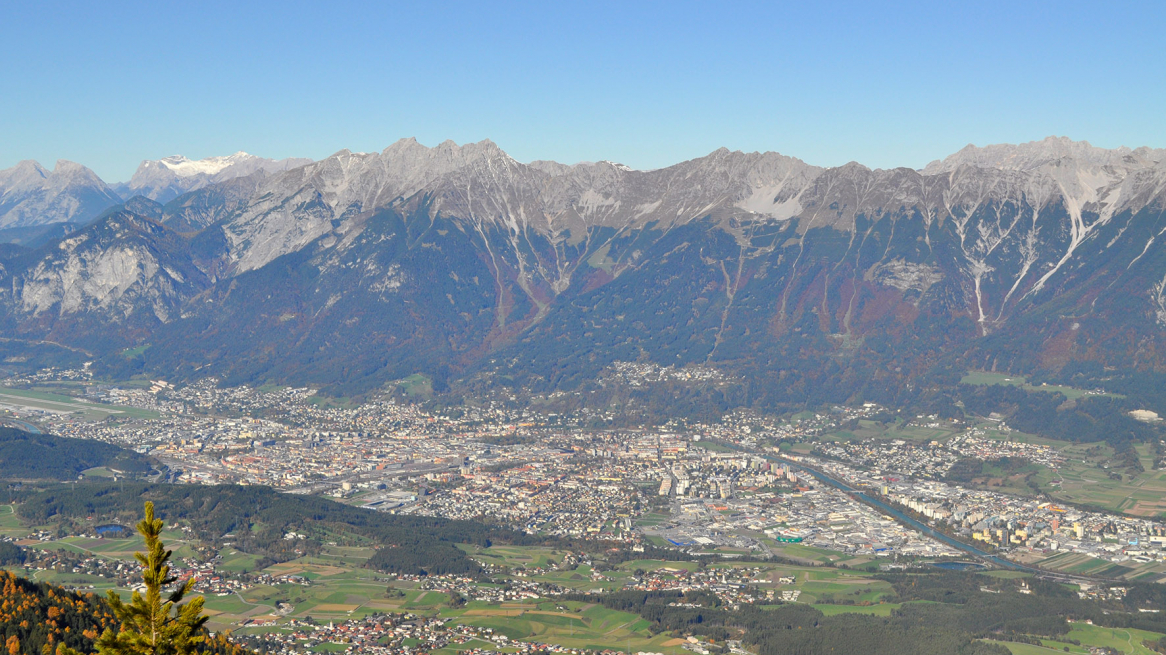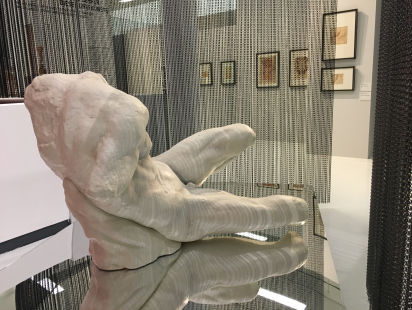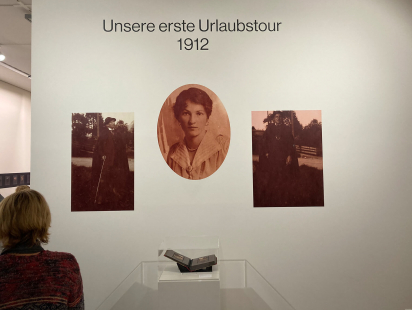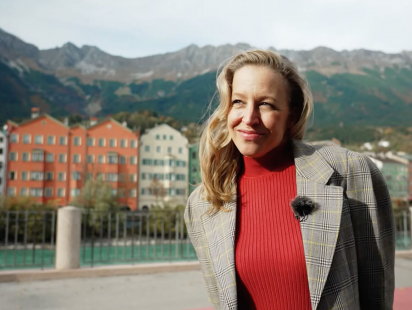Innsbruck's Jesuit Church is unjustly overshadowed by the Hofkirche, also known as the Schwarzmander Church, just a few minutes' walk away. The cross-domed church can be attributed to the early Baroque period and its strict façade structure is reminiscent of Salzburg Cathedral. In addition, the Jesuit church is the burial place of St. Pirmin, the patron saint of Innsbruck along with St. Rochus and St. Sebastian. And: the first painting of the Nordkette can be found here.
ON TYROLEAN SOIL
Together with St. Notburga, Pirmin is the only saint buried on Tyrolean soil. The bones of the Benedictine are in a shrine on the Pirmin Altar, in the front left side chapel of the Jesuit Church. The partially gilded shrine was designed by the artist Rudolf Millonig in 1954 and has a silver-plated relief of Pirmin and inscriptions. The altarpiece above shows Pirmin, the patron saint of plague patients, with mitre and crozier, sitting on a cloud. Below, plague sufferers with snakes in their hands as a symbol of the terrible disease, which carried off people by the thousands in the Middle Ages and early modern times.
IN THE CRYPTA
The sovereign crypt under the choir of the church houses the tombs of eleven princely personalities, including six Habsburgs - first and foremost Archduke Leopold V and Claudia de Medici, the founders of the church. The front rooms and niche walls of the crypt still serve as burial places for members of the order. But what always brings me back to the Jesuit Church is not only the silence that makes me forget the hustle and bustle of everyday life. It is especially a picture that I have not noticed for a long time. It hangs on the wall opposite the Pirminaltar.
SAINT PIRMIN AND THE NORTH CHAIN
At first glance, it seems rather inconspicuous in this consecrated environment. And indeed, the gem only reveals its significance upon closer inspection. The rectangular canvas painting with stucco frame, positioned overhead and thus not immediately in view, is neither dated nor signed.
On the basis of source materials, church and art historians were able to narrow down the time of origin between 1634/35 and 1670. The painting shows the plague angel with skull and flaming sword hovering menacingly over Innsbruck. And it shows St. Pirmin asking the Trinity to spare the city from this disease.
PAINTINGS OF THE NORDKETTE
Not only for art historians exciting is the exact reproduction of the city view. Wonderful to make out beside the hospital church, the parish church, the city tower, the Jesuit church and the Dreiheiligenkirche with the plague hospital. And - the heart beats a few beats faster every time - in the background the imposing Nordkette is depicted no less realistically and for the first time. Which secures the painting a permanent place in local art history. "The depiction is of great importanceboth artistically and in terms of the history of the city," writes Michaela Frick, art historian and employee of the Federal Monuments Office, in an essay on St. Pirmin.
UP THE NORDKETTE!
Of course, a direct comparison between painting and nature would be particularly appealing. But for that you have to leave the church and lift your gaze towards the Nordkette. Or you can pack your rucksack, lace up your hiking boots, set off and simply explore the Nordkette. I prefer to walk along the Inn, over the Psenner footbridge past the Alpenzoo to the heights. In a brisk 40 minutes I am on the Hungerburg. On the way I enjoy fantastic views of the Inn and Wipp valleys, inhale the forest air, shake off stress and everyday worries.
From Hungerburg there are countless hiking options, tours from easy to difficult, for pleasure hikers as well as summit strikers. It goes up to one of the beautiful urban alpine past ures (there is a blog post about their history) or one of the crisp peaks. For example, the ascent to Seegrube via Höttinger Alm takes about 2.5 hours.
BY RAIL
For those who like it more comfortable or want to shorten the tour: Take the Hungerburgbahn to the Hungerburg and continue with the Nordkettenbahnen to the Seegrube or all the way up to the Hafelekar. Not a drop of sweat, no sore muscles and still a gigantic view - simply indescribable!
If you want to have a look at the Nordkette from a distance, you have to go up the other side of the Inntal. Take the Patscherkofel cable car to the mountain station (of course you can also get there on foot!) and continue hiking on the Swiss Pine Trail Direction Viggarspitze. On the way there it presents itself in its full splendour. And if you have photographed the painting of the Nordkette in the Jesuitenkirche or even have it in your head, you can have fun comparing contours and guessing mountain peaks!
On Innsbruck.info you can find great sightseeingand hiking tips around Innsbruck(here, here and here for example) as well as interesting facts about Innsbruck's churches and monasteries. Not to forget the cemeteries - just recently I was at the one in Mühlau, where some famous personalities are buried.
Photos, unless otherwise stated: © Susanne Gurschler
Rate this article
Show me the location on the map
Innsbruck has captured her heart, and the view of the Nordkette mountains soothes her soul. A journalist, non-fiction author, bookworm, amateur photographer, dog owner and mountain walker #ghostsofinnsbruck
Similar articles
It is open until April 18, 2022 at the regional museum Ferdinandeum in Innsbruck…
It was some years ago that Roland Sila, head of the Ferdinandeum library, discovered…
On December 7, a new comedy series starring Nina Proll will start on ServusTV. "Aus die Maus"…
Innsbruck couldn't have dressed up better this October. The air is bone-chillingly cold, the view of the…

